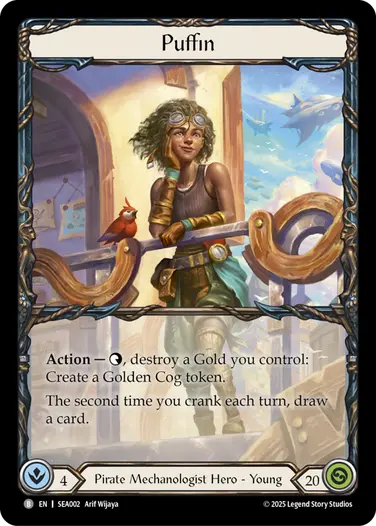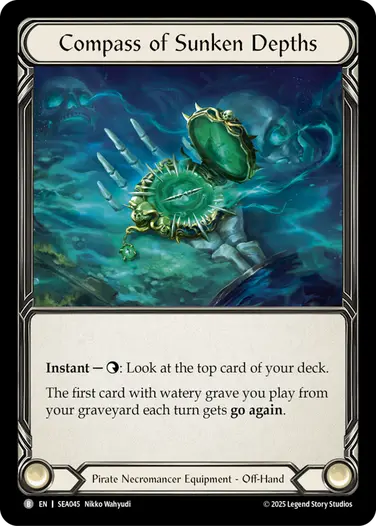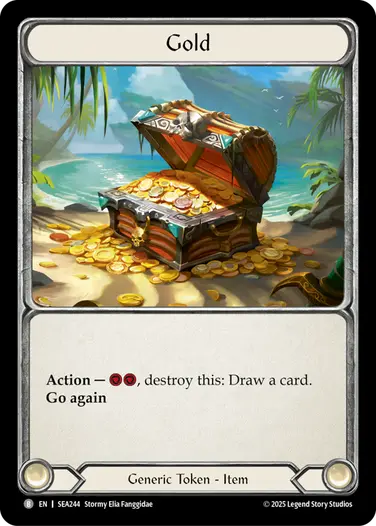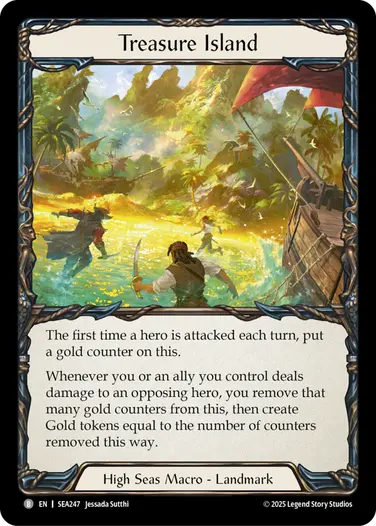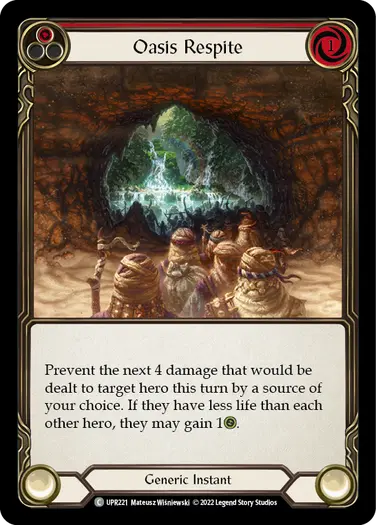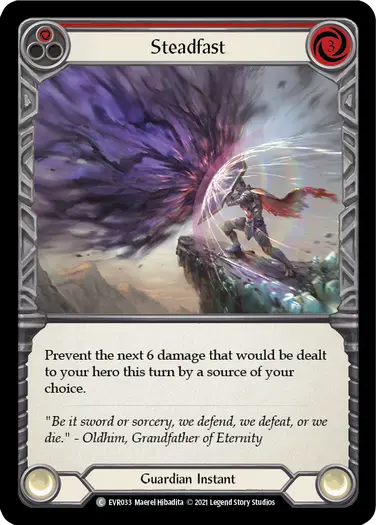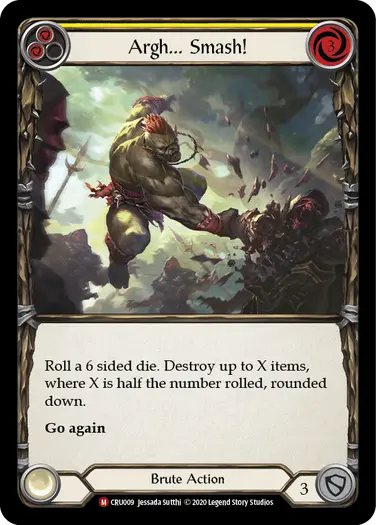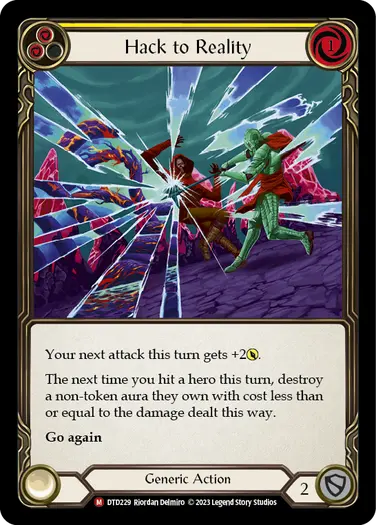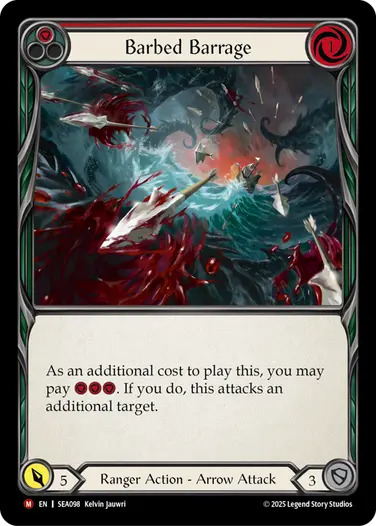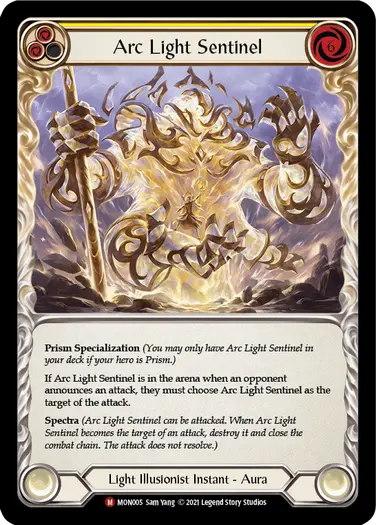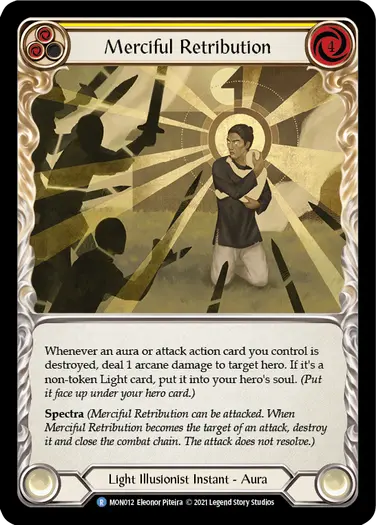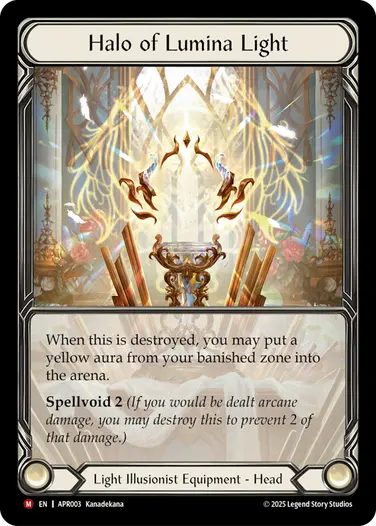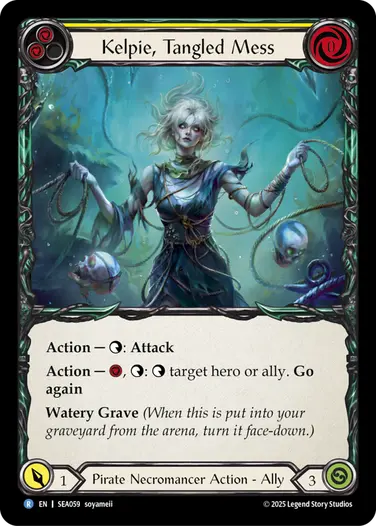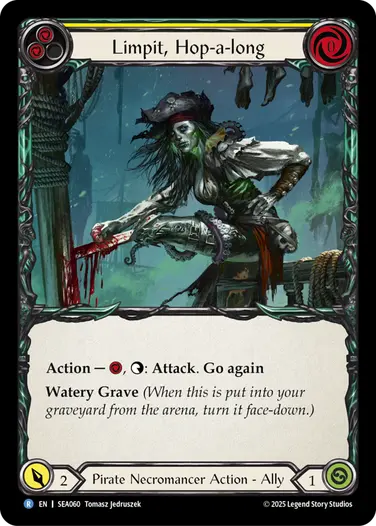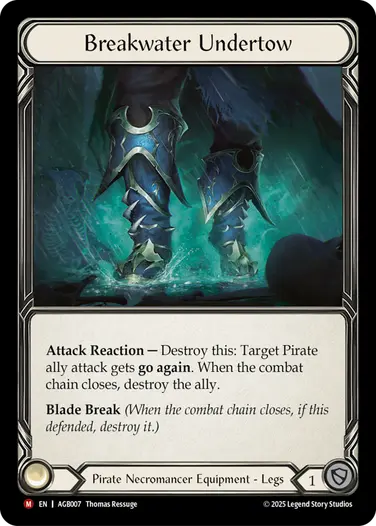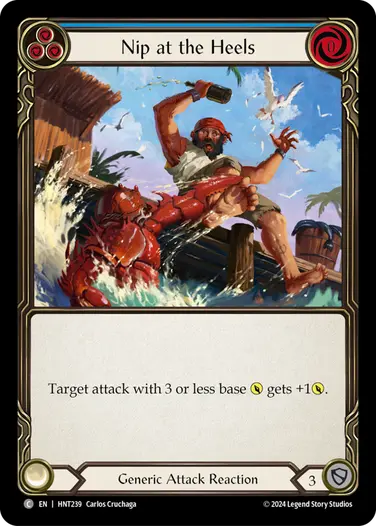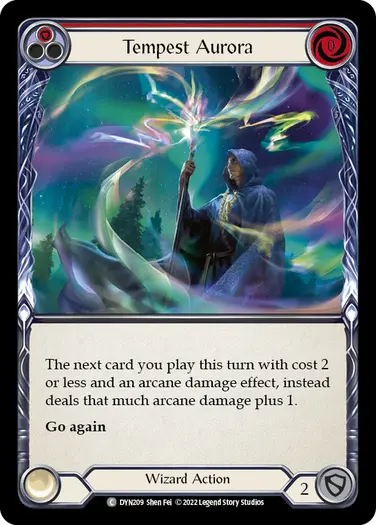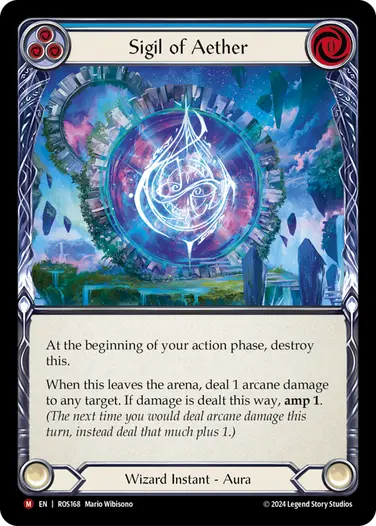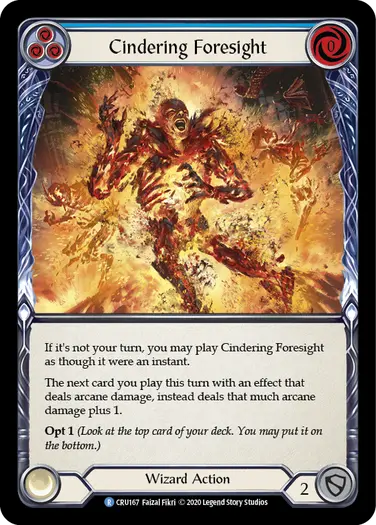With High Seas comes a boatload of rules changes to the seascape of Flesh and Blood. Joshua Scott and Niccolo Paqueo of the Rules Team are here with an article to discuss several notable rule updates you can expect on the set’s worldwide release. Buckle up buccaneers, this Back Alley Oracle is as much of a doozy as a hot mug of Goldkiss Rum on a summer day.
Comprehensive Rules Web Update
The comprehensive rules document is moving from a PDF format to a primarily HTML format. While this has been a long time coming, there are plenty of improvements and extensions we have planned to push it even further, including:
- Adding the TRP and PPG documents
- Tooltips for cards and glossary terms
- In-browser version comparison
- API hooks for 3rd party applications
We are hoping that the change in platform will give players and judges a more helpful and accessible user experience. The English Comprehensive Rules will be released this Friday with the v2.11.0 update for High Seas, and the Japanese translation to follow in the coming weeks.
The PPG and TRP updates for High Seas will be published in their PDF formats.
Basic Rarity
Future cards will be printed with basic-rarity when they would have otherwise been printed with token-rarity.
Previously, the term token had been used in two different contexts: to describe a type of card created by effects (Might, Runechant), and as a rarity on cards that are used to supplement limited play. Often token-cards were token-rarity, but some non-token-cards were token-rarity (e.g. heroes, weapons) and some token-cards were not token-rarity (e.g. promos, marvels). This overlap created confusion for players, collectors, and retailers, especially when distinguishing between a card’s gameplay function and its collectibility or distribution.
Now, we are introducing basic-rarity as a replacement for token-rarity. Cards with basic-rarity function identically to those previously marked with token-rarity. There is no change to their legality, gameplay, or the rules and policy that apply to them - the only difference is the symbol used to denote the rarity: a grey circle with a "B".
Card-choosing limited to arena+stack
If you must choose an object as part of an effect, and the parameters of the choice aren't limited by location or state, you must choose an object that is in the arena or on the stack.
Previously, when selecting an object for the parameters of effects, you were able to select any public (face-up) object in the game. While this worked for the vast majority of the game, this did open up some weird interactions.
- You could choose a face-up card in any zone with Oasis Respite, Steadfast, Helio’s Mitre and Sanctuary of Aria.
- You could destroy a face-up item / aura card in any zone with Argh… Smash! and Hack to Reality.
Now, choosing a card for an effect is aligned with the same restrictions as targeting: the object must be a public (face-up) object in the arena or on the stack. By aligning the restrictions of these two elements of determining parameters, we hope to lessen the burden of differentiation between them as well as close off these undesirable interactions. This is likely to have no bearing on the meta.
Spectra definition
When a spectra triggered-layer resolves, it destroys its source, but doesn't close the combat chain. The absence of an attack-target closes the combat chain.
Previously, spectra was defined as:
- This can be attacked. When this becomes the target of an attack, destroy this and close the combat chain.
Now, spectra is simply defined as:
- This can be attacked. When this becomes the target of an attack, destroy this.
This change removes the explicit closure of the combat chain from the effect, and as a result would previously remove the attack from the stack. Instead the combat chain closes due to the lack of an attack-target, but this closure doesn't happen immediately. If an attack is on the stack, and the attack-target ceases to exist, it's only when both players pass priority and try to resolve the layer with the attack do we close the combat chain due to the lack of target for the attack.
It is important to note that this is not an errata for cards with spectra. Reminder text on cards serves the purpose of informing the player the intention of the effect, but is not considered rules text on the card. While Spectra no longer explicitly closes the combat chain, the expectation is that the combat chain will still be closed in the vast majority of cases. Always refer to the true-text on the official card database and consult the comprehensive rules for the most up-to-date rules text for cards and keywords.
Nic controls an Arc Light Sentinel. Tyler plays Barbed Barrage and announces they will pay the additional cost. They must choose two targets for the attack. Tyler chooses Nic's hero and Arc Light Sentinel. During the Layer Step of combat, Nic's Arc Light Sentinel triggers with Spectra. The trigger resolves and destroys Arc Light Sentinel. However, because Barbed Barrage still has at least one target, Nic's hero, the combat chain will not close when the Barbed Barrage resolves on the stack, and the combat will continue into the Attack Step.
Removing the explicit effect to close the combat chain is very similar to the recent changes to phantasm. This change also opens up a wider design space for introducing new ways to deal with spectra auras, as well as creative plays when you have priority before the combat chain closes.
Extra for Experts:
Nic is playing as Prism, and controls a Halo of Lumina Light, Arc Light Sentinel, and Merciful Retribution. Tyler targets Arc Light Sentinel with an attack. Spectra triggers and resolves, destroying Arc Light Sentinel and triggering Merciful Retribution - Nic chooses to target themself. Still, during the Layer Step of combat, Merciful Retribution's trigger resolves, Nic uses Halo of Lumina Light to prevent the arcane damage and Arc Light Sentinel is put into Nic's soul. Halo of Lumina Light triggers, but before it resolves, Nic activates and resolves Prism's ability and banishes Arc Light Sentinel from their soul. Finally, Halo of Lumina Light's trigger resolves, and Nic puts Arc Light Sentinel from their banished zone into the arena. This is now possible because the combat chain doesn't close immediately due to spectra, and instead combat continues in the Layer Step until both players try to resolve the last attack without a target.
Attack reactions and attacking with allies
If you control an ally attack on the active chain link, you can play/activate attack reactions during the reaction step.
Previously you had to be the attacking player during the reaction step to play/activate attack reaction cards/abilities. When you attack with an ally, you are considered the controller of the attack, but you as the hero are not considered the attacking hero.
Now, you are able to play/activate attack reactions despite not being the attacking hero. Note that this change does not make you the attacking hero, it simply allows you to play/activate during the reaction step. This opens up space for more interaction and synergies with allies, without having to lean on instants which can be played at any point in combat (including after damage has been dealt). There are no changes for a player controlling an ally that is being attacked - they still cannot play/activate defense reactions unless their hero is the target of the attack.
Tyler controls a Breakwater Undertow and a Kelpie, Tangled Mess and Nic controls a Limpit, Hop-a-long. Tyler activates Kelpie to attack Nic's Limpit. During the Defend Step, Nic cannot declare any defending cards, because their hero is not the one being attacked. During the Reaction Step, Tyler activates and resolves Breakwater Undertow, targeting Kelpie's attack, giving it go again. Again, Nic cannot play or activate any defense reactions, because their hero is not the one being attacked. Tyler's Kelpie kills Nic's Limpit, and Tyler has an action point to continue their turn.
The duration of Continuous Effects defaults to End of Turn
If a layer-continuous effect does not have a duration, the default duration of the effect is until the end of the turn.
Previously, if an effect did not have a duration, the effect was "permanent". This was typically inconsequential, as most effects without a duration were specifically designed for cards that had a short lifespan (attack action cards, cards that resolve and go to the graveyard, etc.).
Now, if an effect without a duration applies to a card, and the card continues to exist beyond the end of the turn (i.e. without going to the graveyard) the effect will cease to exist at the end of the turn instead. This reduces the mental load on players that would otherwise have to track invisible effects throughout multiple turns.
Tyler plays and resolves Tempest Aurora and then Sigil of Aether. Because Sigil of Aether costs 0 and has an arcane damage effect, Tempest Aurora's effect applies to the Sigil of Aether. Tyler ends their turn, Nic plays their turn, and Tyler begins their next turn. Sigil of Aether triggers and resolves, but only deals 1 damage, because Tempest Aurora's effect has now expired.
Relaxed restrictions on reordering cards in the Graveyard or Banished
Players may reorder cards in their own graveyard and banished zones, as long as it doesn't disrupt gameplay or serve as note-taking.
Previously, players could not reorder cards in their graveyard or banished zone, unless there was a relevant effect that interacted with cards in those zones. Even then, the cards could only be sorted roughly into groups that pertained to those effects. Doing so otherwise would be considered note-taking.
Now, players may reorder cards in their own zones (including their graveyard and banished zone), as long as it serves the purpose of facilitating communication and efficient gameplay. However, players cannot sort their cards obsessively (e.g. sorting cards alphabetically, or by the order they appear on the player's decklist), or rearrange the cards for the purposes of note-taking (e.g. using cards in the graveyard to track the contents and/or position of cards in their deck). We hope that this change will help alleviate some of the burden of players looking through the entirety of a player's graveyard or banished zone in order to gain information to make a decision. We will continue to monitor the application of this policy closely and will adjust it as necessary.
In addition, players can also make additional piles for cards that are face-down when those cards are affected by different continuous effects - this is to ensure that both players can accurately track which continuous effects apply to which face-down cards, without having to reveal those cards to all players (e.g. when you have face-down cards in your banished zone, and then a card gets intimidated from your hand). However, players should still be considerate of other games around them, especially when play-space is limited.
